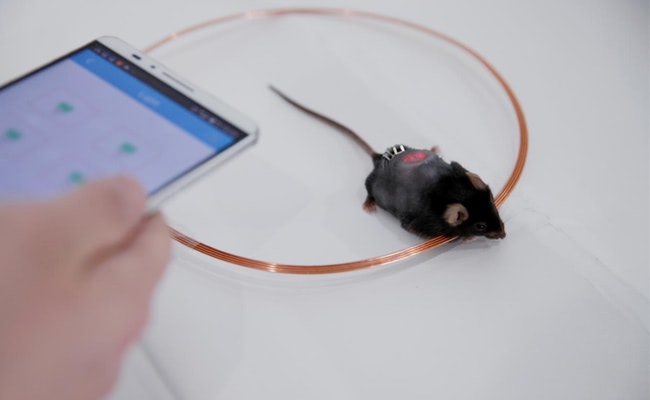Today around 422 million people are suffering from diabetes. The access to insulin is crucial for their survival. Until now this used to be done via a manually handled needle injection. This technique may soon become a thing of past, as Chinese scientists have recently developed a device regulated by a smartphone app switching on insulin producing cells implanted in the diabetic body.
Until now, the device has been tested in diabetic mice, it works as a coin sized hydrogel capsule implanted under the mice skin. This Implant is embedded with LED lights and synthetically engineered cells responding to the light with the release of insulin. In the tests, the released insulin stabilized the mouse blood sugar successfully in an appropriate time. The procedure is regulated through a custom made app on an android device. As a counteract to the false rise of blood sugar, buttons on the app switch on the LEDs responsible for communicating to the insulin giving cells. With a regulator, the user of the app can adjust how bright and long the LEDs need to shine in order to control the produced amount if insulin. Via a Bluetooth transmitter a glucometer notifies the smartphone app of the high blood sugar level, reacting with the immediate creation of insulin.
Even though this sounds like a ready to go method, it still has some difficulties. Until now it has been tested on several animals. The smartphone app communicates with an server turning on an electromagnetic field coil, surrounding the animal patient. The electromagnetic field functions as the power of the LEDs in the implanted capsule. Translated to the human world, this construction is comparable to a smart home hub, which means the technique would not allow the patient to leave the house. Next step is the development of a body inbuilt test station to constantly monitor the patient's blood sugar levels, to then automatically trigger the LEDs functioning on batteries to allow the wearer to move independently, also outside the house.
This could be a big advancement in helping people with diabetes and also an exciting look into the future of smart cell-based therapeutics.

Share your thoughts and join the technology debate!
Be the first to comment